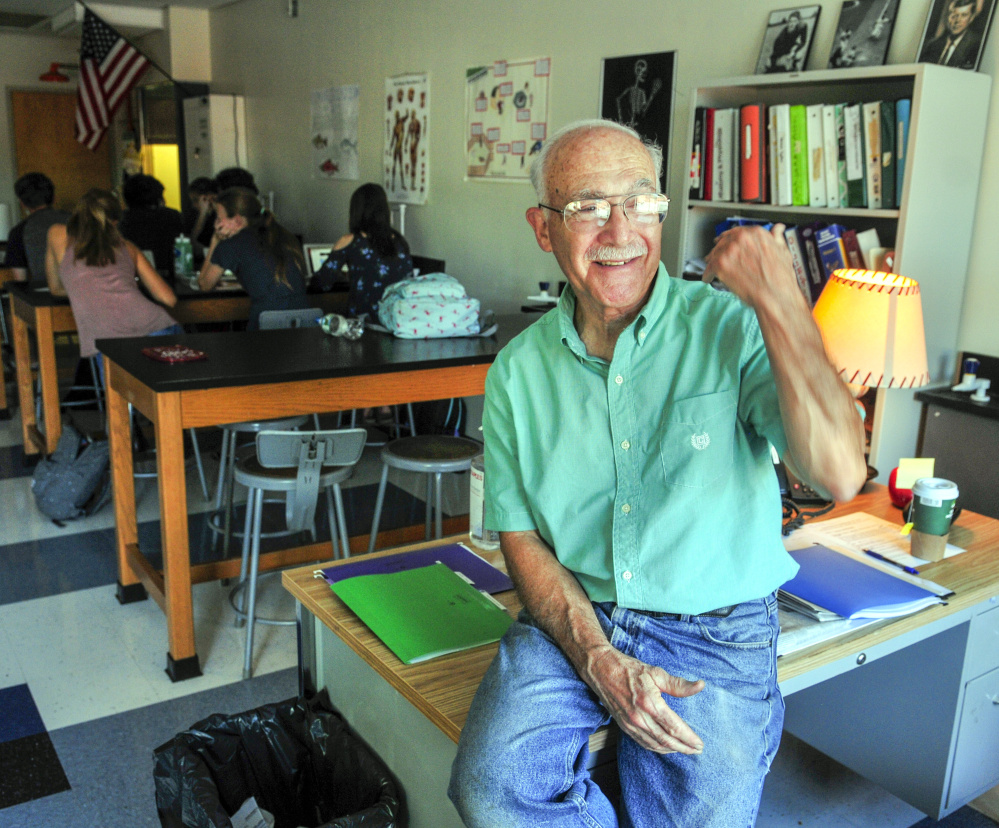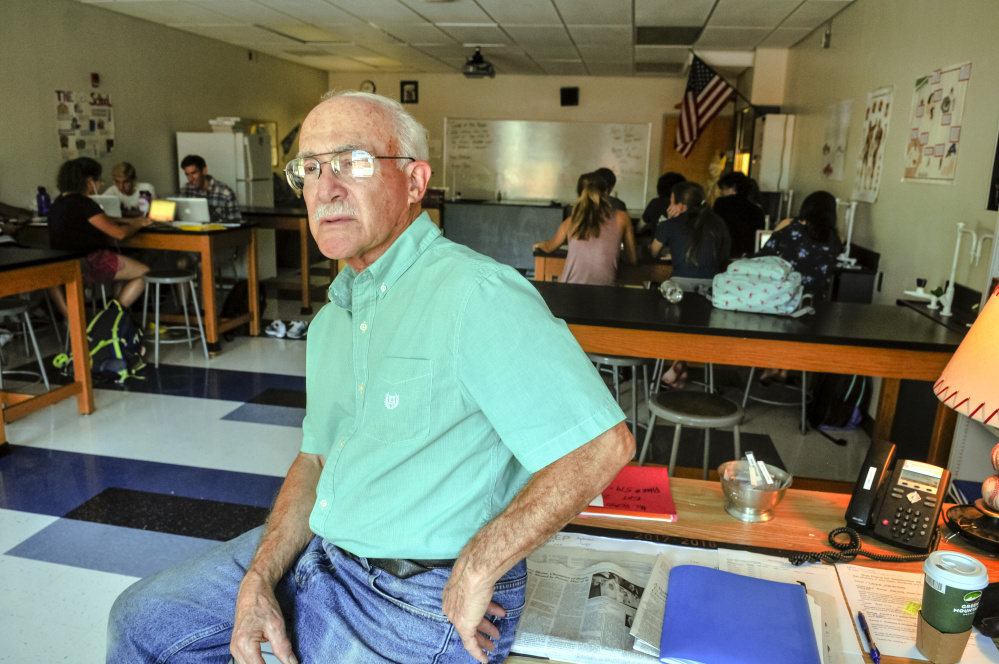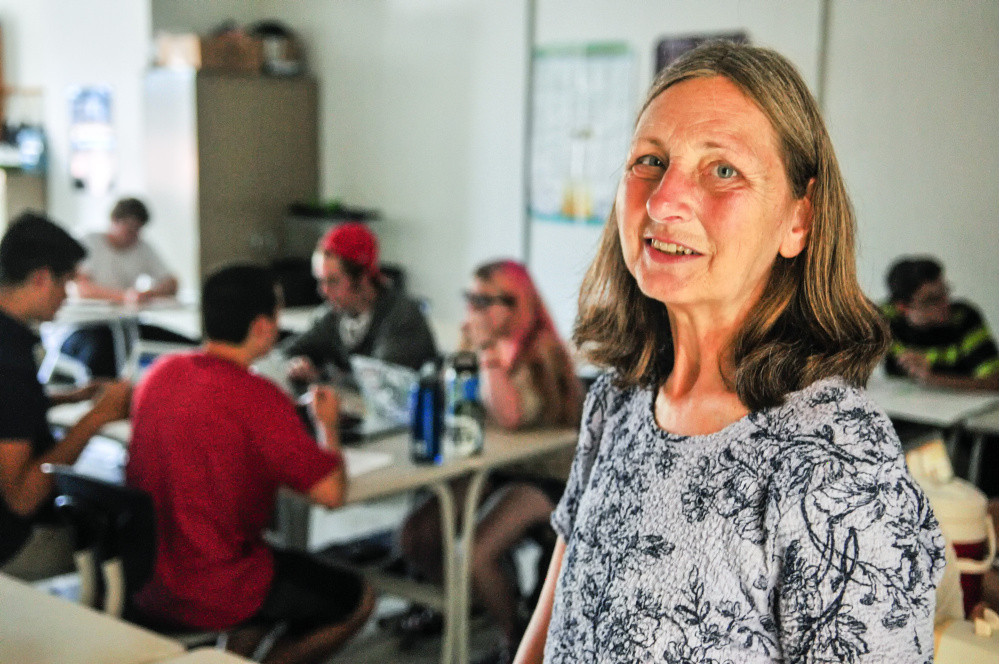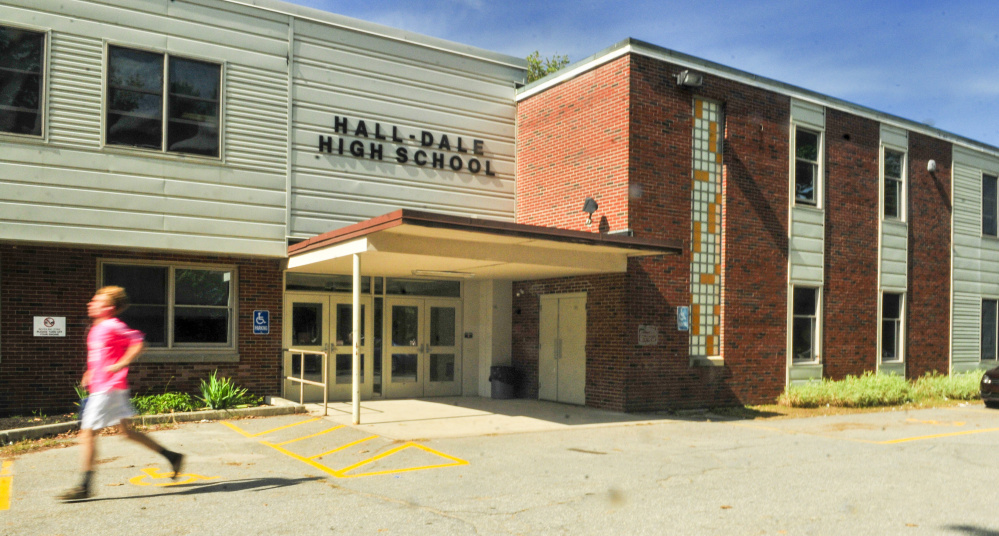HALLOWELL — Superintendents and principals in central Maine are dealing with a substitute teacher shortage that’s forcing them to be creative when trying to fill unexpected teacher absences.
“We’re professional jugglers as well as educators,” said Hall-Dale High School Principal Mark Tinkham.
With unemployment at all-time low levels and a decrease in qualified full-time teachers to fill open jobs, the substitute teacher pool districts draw from is getting shallower, Regional School Unit 2 Superintendent William Zima said. He said they’ve been trying different things to get people to want to be substitutes, but there aren’t enough people out there.
“It’s a nice job because you can make your own hours and work whenever you want,” he said.
The Department of Education doesn’t keep track of substitutes, a spokeswoman said. Substitutes aren’t required to be certified teachers approved by the state, so managing substitutes is done at the local level. In most districts, substitute teachers must have at least 60 college credits, and they are paid more if they’ve earned bachelor’s degrees. A criminal background check and fingerprinting also are part of the process.
A national teacher shortage can be partly blamed, Zima said, because there just aren’t as many people getting into the profession. A study done by the Learning Policy Institute, a nonprofit based in Palo Alto, California, and Washington, D.C., that works to improve education policy and practice showed last year that enrollment in teaching preparation programs nationwide has dropped 35 percent from 2009 to 2014 — from 691,000 people to 451,000 potential teachers, a drop of almost 240,000 would-be teachers.
“How do you solve this problem?” Zima asked.
According to the Department of Education, there were 15,502 public school teachers in Maine during the last school year, just 49 more than during the 2011-2012 school year. There were 2,010 substitutes in Maine in 2016, according to the Department of Labor, and there were 1,810 in 2012. There just isn’t a lot of growth, Zima said.
Teachers can call out of work for any number of reasons, and sometimes the school isn’t alerted until that morning.
Several superintendents and principals in central Maine said conversations between district officials happen all the time about how to attract more people to the profession, but they don’t seem to find a concrete solution to the growing problem.
Lois Kilby-Chesley, president of the Maine Education Association, said it’s a statewide shortage because fewer people are willing to substitute.
“It’s a mess right now,” she said.
MORE MONEY, SAME PROBLEMS
In School Administrative District 11 — which includes Gardiner, Pittston, Randolph and West Gardiner — Superintendent Patricia Hopkins said the district increased its daily rate from $60 to $75 in hope of attracting more substitutes to the district. Paying a competitive rate, with so many districts substitutes can choose from, is important to filling open jobs.
“The people we draw from also work in other area schools,” Hopkins said. “We’re all sharing the same people.”
Peter Thiboutot, the assistant superintendent for Alternative Organizational Structure 92, which serves Waterville, Winslow and Vassalboro, agreed and said it’s hard to fill 20 to 25 openings a day when everyone is competing for the same people.
“A lot of our subs have also registered to sub in Fairfield and the other area schools,” he said. “It’s tough.”
David Shapiro is a retired former administrator at Portland and Deering high schools and said he is substituting because he “had an empty wallet.” Earlier this week, he was at Hall-Dale High School in a 10th-grade biology class. He said finding a solution to the substitute teacher shortage won’t be easy, because just putting extra money into it isn’t the answer. Regional School Unit 2 pays its substitutes $75 per day if they have a bachelor’s degree, and they make more money if it’s a long-term assignment.
“Every school and district varies, and their climates and school cultures are different,” Shapiro said.
Hopkins said the daily rate isn’t important if nobody is willing to take the jobs. She said she’s heard that a district along the coast pays $100 a day and still is struggling to find substitutes.
“It doesn’t matter how much you pay if there’s nobody there,” she said. “But if another district is going to pay more, someone’s going to be more likely to substitute from them than us.”
Thiboutot said districts need to find someone who wants to work with children and, if they’re leaving a different field, think it’s worth a shot.
“It’s usually somebody’s calling, and you have to find the right combination,” he said, “but money is an issue.”
ALL HANDS ON DECK
Most districts have a substitute teacher list, and an automated system will call people on the list until the position is filled. But that doesn’t always happen.
Hopkins said last week there was an opening and 49 people were called. Nobody accepted the spot. The position was unfilled, leaving the school to scramble to cover those classes. She said 129 open substitute jobs went unfilled last school year, and using other teachers or administrators to cover those classes is not ideal.
“You have to get creative and look at our teaching staff and available ed techs, and there are times when we have to pull them,” Hopkins said. “Everyone has another job and everyone has demands placed on them, so if they’re being pulled to sub, they aren’t able to get their other work done.”
Tinkham said that it’s all hands on deck at Hall-Dale High School when a job is unfilled. Too few people are on the call lists, he said.
“We’ll have ed techs cover, we’ll have teachers give up their prep periods and we’ll have myself or the assistant principal step into a classroom,” Tinkham said. “We’re all banging our heads on what to do.”
Thiboutot said not having a substitute to cover a class is a school’s worst nightmare because it means sometimes teachers give up their planning periods, students move around the campus to different classes or administrators are pulled into the classroom.
POOL ISN’T AS DEEP
One morning this week, at least 10 full-time teaching positions in Kennebec County were listed on servingschools.com, an education job board. The number of available jobs probably is keeping some people from offering to substitute to get their foot in the door, Zima said. Many teachers in RSU 2 — which includes Hallowell, Richmond, Farmingdale, Monmouth and Dresden — started their careers as substitutes, but that doesn’t happen as much anymore.
Hopkins agrees that the shortage of teachers directly affects who would be available to substitute.
“There’s a smaller pool of people who are applying, and more of them are being hired, which means there’s fewer people putting themselves on the substitute list,” she said.
Some teachers, she said, are willing to work only at the high school level, or middle school, or a specific grade or subject area, and those specific criteria limit what districts can do.
Katherine McMahon retired several years ago after working more than 40 years for the state of Maine. She was bored at home and decided to give back to the community. She tries to work as many days as possible, and she prioritizes working with special-needs students.
“I came to work with these students because they need our help,” she said. “I don’t accept assignments when I know I won’t be able to assist the students.”
Tinkham said there’s so much negativity around education that he understands why some people might be less interested in becoming teachers. He said Betsy DeVos, the U.S. Secretary of Education, and others in power pushing charter schools and a move away from public education puts the wrong picture in peoples’ minds when it comes to the public school system. He said someone in leadership who understands education is needed.
He said he’s had full-time openings in the last few years that drew only four or five applicants. He’s trying to remain positive and continuing to build on the culture at Hall-Dale High.
“We have good kids, a good climate and a pretty youthful staff I hope will stay for a long time,” he said. “We need to start investing more (in education), because that’s where the future is.”
Thiboutot, however, said AOS 92 has done well, getting more than enough qualified candidates to fill recently advertised positions.
Kilby-Chesley said retired teachers, such as Shapiro, are an example of the people whom districts should be seeking to add to their substitutes lists.
“Having the support of the administration when you’re in (the classroom) and knowing that you’re part of that school community is a big part of it,” she said.
Jason Pafundi — 621-5663
Twitter: @jasonpafundiKJ
Send questions/comments to the editors.







Success. Please wait for the page to reload. If the page does not reload within 5 seconds, please refresh the page.
Enter your email and password to access comments.
Hi, to comment on stories you must . This profile is in addition to your subscription and website login.
Already have a commenting profile? .
Invalid username/password.
Please check your email to confirm and complete your registration.
Only subscribers are eligible to post comments. Please subscribe or login first for digital access. Here’s why.
Use the form below to reset your password. When you've submitted your account email, we will send an email with a reset code.